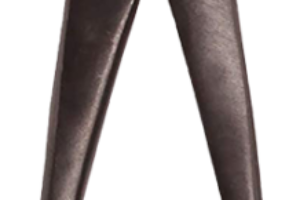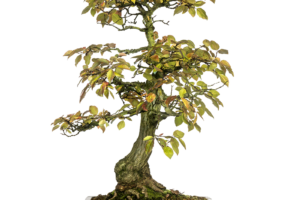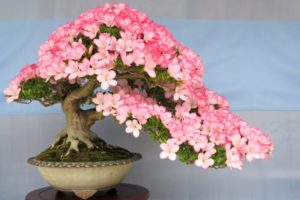YouTube
Bonsai Health
Bonsai trees are beautiful and intricate miniature versions of their full-sized counterparts, but like all living things, they are susceptible to diseases and pests. Proper care and maintenance are crucial to keeping your bonsai healthy and free from harmful invaders. In this blog post, we will discuss some of the most common bonsai diseases and pests, as well as ways to prevent and treat them.
Common Bonsai Diseases
Root Rot
Root rot is one of the most common bonsai diseases and is caused by overwatering or poor drainage. When the roots of a bonsai tree are constantly in wet soil, they become vulnerable to fungal infections. Symptoms of root rot include yellowing leaves, wilting, and a mushy or rotten smell coming from the soil. To prevent root rot, it is important to make sure that your bonsai is planted in well-draining soil and that you do not water it too frequently. If your bonsai is already showing signs of root rot, it is important to remove it from the soil and let the roots dry out before repotting it in fresh soil.
Powdery Mildew
Another common bonsai disease is powdery mildew, which is a fungal infection that causes a white or gray powdery coating on the leaves and branches of a bonsai tree. This disease is often caused by high humidity or poor air circulation. To prevent powdery mildew, it is important to ensure that your bonsai has enough light and that the air around it is circulating properly. If your bonsai is already showing signs of powdery mildew, you can treat it with a fungicide specifically formulated for bonsai trees.
Common Bonsai Pests
Spider Mites
Pests are also a common problem for bonsai trees. One of the most common bonsai pests is the spider mite, which is a tiny spider-like insect that feeds on the sap of the tree. Spider mites can cause yellowing and wilting of the leaves and can quickly infest a bonsai if left untreated. To prevent spider mites, it is important to keep the tree and its surrounding area clean and to regularly inspect the tree for signs of infestation. If your bonsai is already infested with spider mites, you can treat it with an insecticide specifically formulated for bonsai trees.
Mealybugs
Another common bonsai pest is the mealybug, which is a small, white, and fluffy insect that feeds on the sap of the tree. Mealybugs can cause yellowing and wilting of the leaves and can quickly infest a bonsai if left untreated. To prevent mealybugs, it is important to keep the tree and its surrounding area clean and to regularly inspect the tree for signs of infestation. If your bonsai is already infested with mealybugs, you can treat it with an insecticide specifically formulated for bonsai trees.
Prevention and Treatment
Proper care and maintenance
To prevent bonsai diseases and pests, it is essential to provide your bonsai with proper care and maintenance. This includes providing the tree with the right amount of light, water, and nutrients, as well as regularly pruning and shaping the tree to promote healthy growth.
Regular inspection and monitoring
Regularly inspecting your bonsai for signs of disease or pests is also important. This will allow you to catch any issues early on and take steps to prevent them from getting worse.
Using appropriate fungicides or insecticides
Using appropriate fungicides or insecticides is an important part of preventing and treating bonsai diseases and pests. When choosing a fungicide or insecticide, it is important to select one that is specifically formulated for bonsai trees. This will ensure that the product is safe to use on your tree and will not cause any damage.
When using fungicides, it is important to follow the instructions on the product label and to apply the fungicide at the right time. For example, some fungicides are designed to be applied at the first sign of disease, while others are intended to be used as a preventative measure. Applying fungicides at the wrong time can be ineffective or harmful to your bonsai.
When using insecticides, it is important to be mindful of the type of pest that is affecting your bonsai. Different types of pests require different types of insecticides. For example, spider mites and mealybugs require different insecticides to control. It is important to identify the type of pest and choose the appropriate insecticide for it.
In addition to using fungicides and insecticides, it is also important to take steps to prevent pests and diseases from occurring in the first place. This includes providing your bonsai with proper care and maintenance, as well as regularly inspecting it for signs of disease or pests.
It is also important to be aware of the environmental conditions that can contribute to the spread of diseases and pests. For example, high humidity can promote the growth of fungal infections, while poor air circulation can allow pests to thrive. By being mindful of these conditions and taking steps to improve them, you can help to prevent diseases and pests from affecting your bonsai.
In conclusion, keeping a bonsai tree healthy is an ongoing process that requires regular care and attention. By being aware of the most common bonsai diseases and pests, as well as ways to prevent and treat them, you can ensure that your bonsai tree stays healthy and beautiful for years to come. Using appropriate fungicides and insecticides, regular inspection and monitoring, proper care and maintenance, and being mindful of the environmental conditions can help prevent bonsai diseases and pests and keep your bonsai healthy and beautiful.







Leave a Reply
Your email is safe with us.
You must be logged in to post a comment.